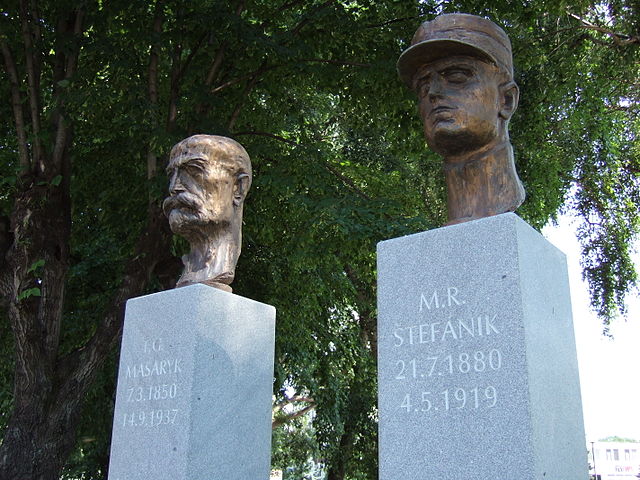The Velvet Revolution or Gentle Revolution was a non-violent transition of power in what was then Czechoslovakia, occurring from 17 November to 28 November 1989. Popular demonstrations against the one-party government of the Communist Party of Czechoslovakia included students and older dissidents. The result was the end of 41 years of one-party rule in Czechoslovakia, and the subsequent dismantling of the command economy and conversion to a parliamentary republic.
Demonstration of 25 November 1989 in Prague.
Memorial of the student demonstrations of 17 November, in Prague
Memorial of the Velvet revolution in Bratislava (Námestie SNP), Slovakia: "'Only those who struggle for their freedom are worthy of it.' At this place in November 1989 we decided to take our responsibility for the future into our own hands. We decided to put an end to communism and to establish freedom and democracy."
St. Wenceslas Monument
Czechoslovakia was a landlocked state in Central Europe, created in 1918, when it declared its independence from Austria-Hungary. In 1938, after the Munich Agreement, the Sudetenland became part of Nazi Germany, while the country lost further territories to Hungary and Poland. Between 1939 and 1945, the state ceased to exist, as Slovakia proclaimed its independence and Carpathian Ruthenia became part of Hungary, while the German Protectorate of Bohemia and Moravia was proclaimed in the remainder of the Czech Lands. In 1939, after the outbreak of World War II, former Czechoslovak President Edvard Beneš formed a government-in-exile and sought recognition from the Allies.
Czechoslovak troops in Vladivostok (1918)
Czechoslovak declaration of independence rally in Prague on Wenceslas Square, 28 October 1918
A monument to Tomáš Garrigue Masaryk and Milan Štefánik—both key figures in early Czechoslovakia
The car in which Reinhard Heydrich was fatally injured in 1942








